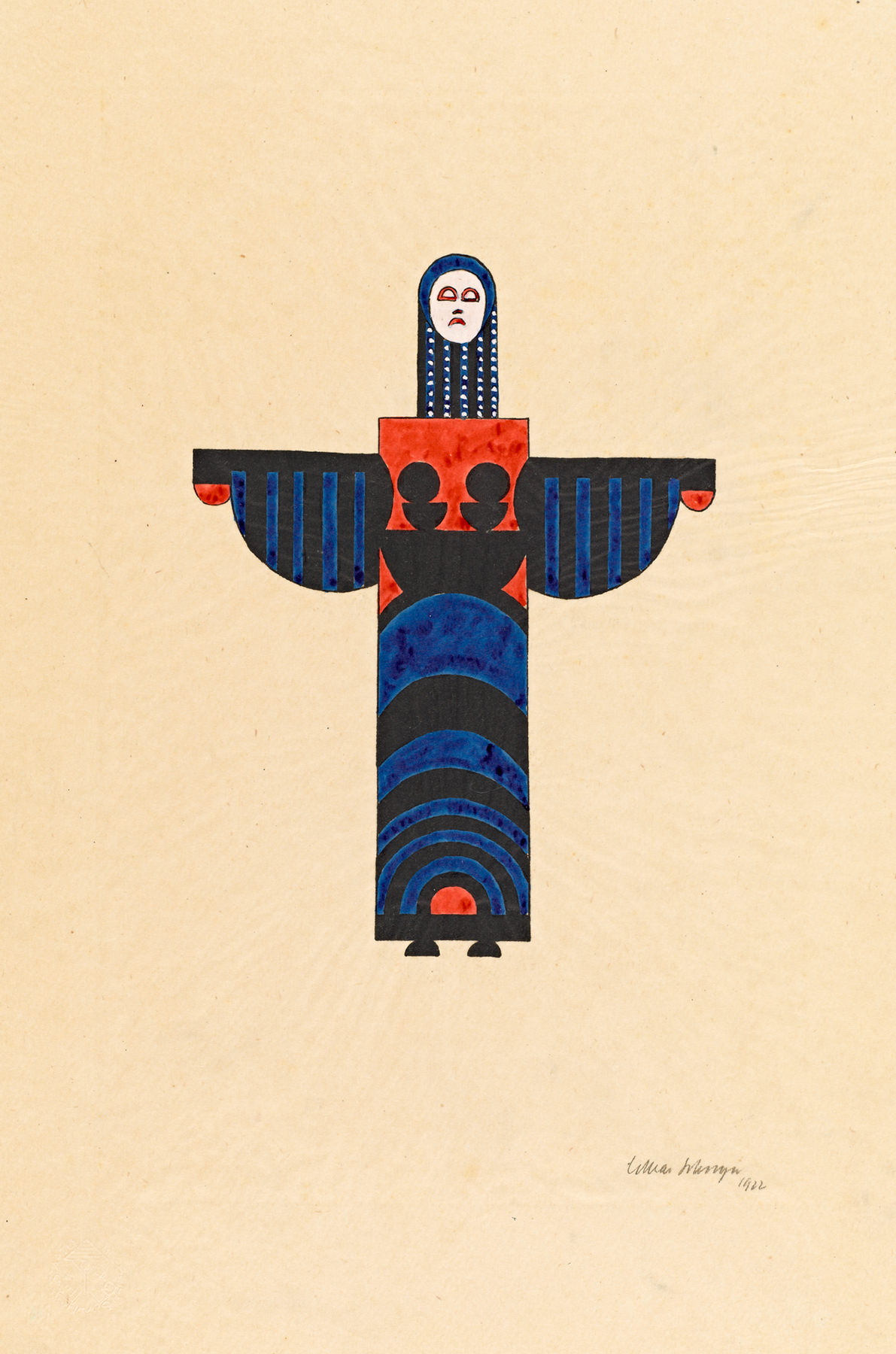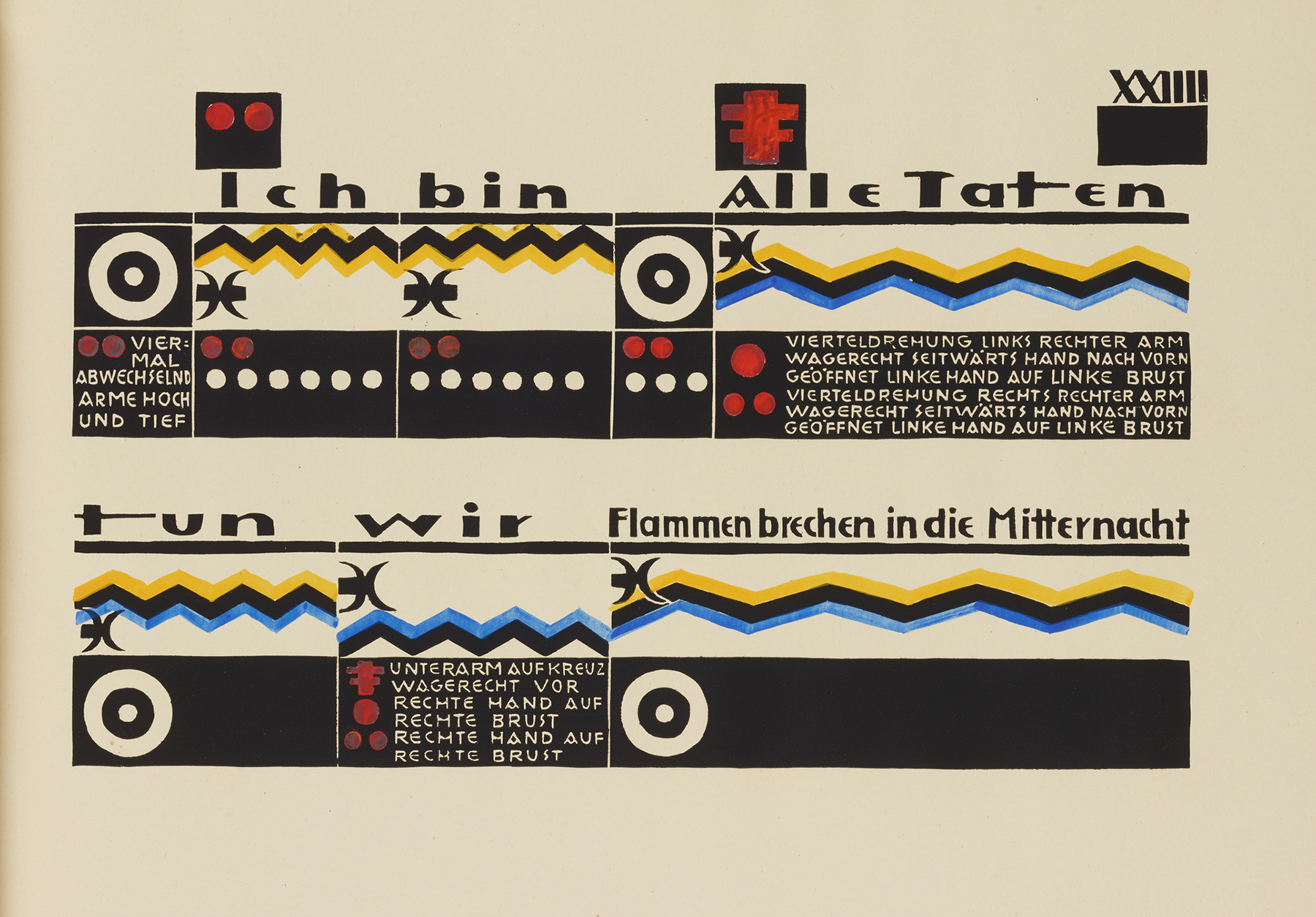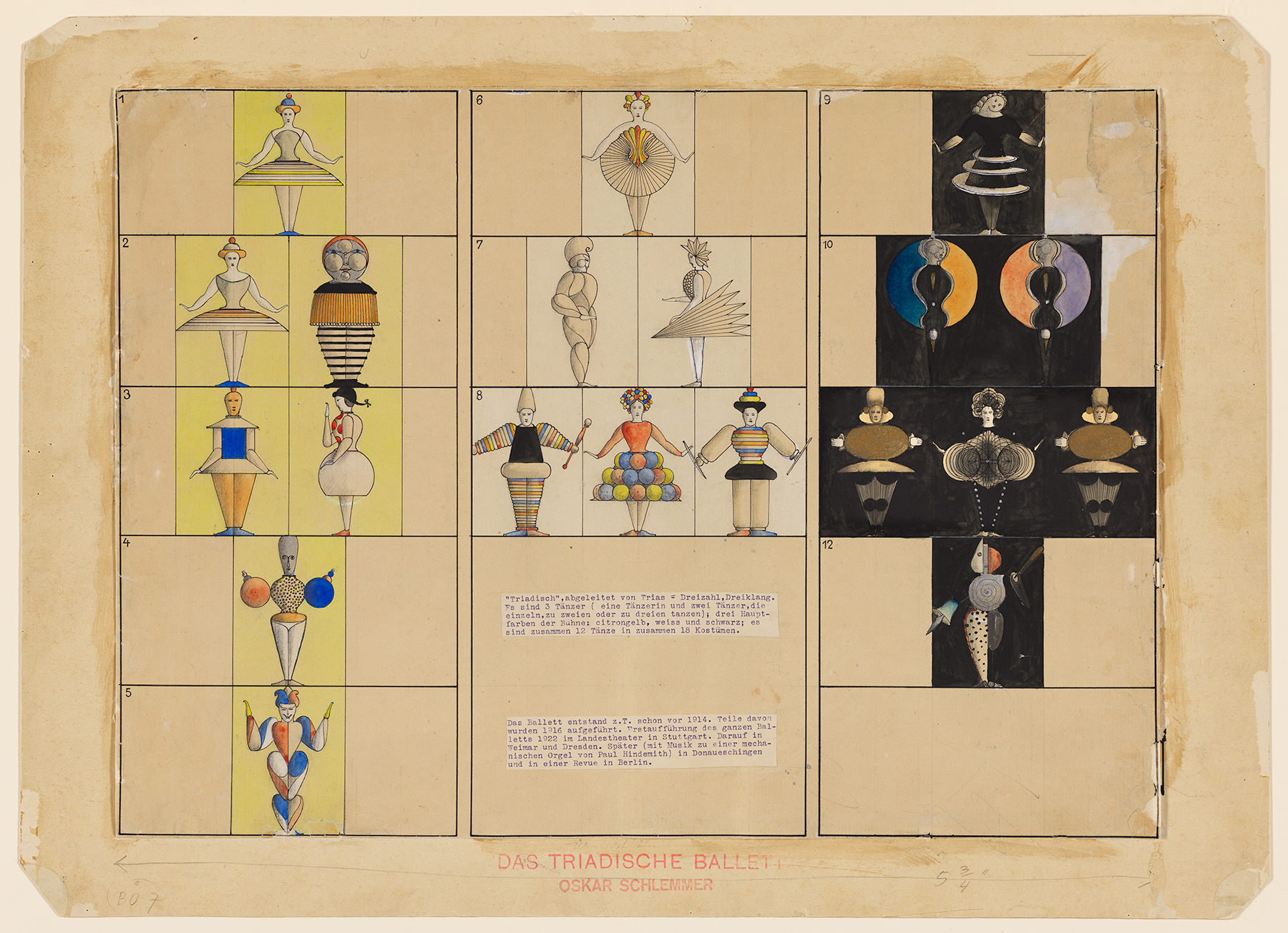Experimental Theater
 Fig. 68.
Fig. 68.The Bauhaus stage workshop was characterized by an esoteric agenda pursued with mathematical precision. Lothar Schreyer, who led the workshop from 1921 to 1923, was primarily interested in the symbolic representation of spiritual and mystical forces through physical forms. Crucifixion: Performance Score VII (1920) was created shortly before Schreyer arrived at the Bauhaus but is representative of the type of theater he continued to develop during his tenure at the school.
Schreyer presented the play in the form of a richly illustrated artist’s book featuring 77 hand-colored pochoir woodcuts. Using a notation system that he likened to a musical score, Schreyer supplied symbols for characters and stage design, cues for directional movement, and schemas for word order, diction, rhythm, and volume.
 Fig. 69.
Fig. 69.The score could be read by anyone “who hears in himself the word-tones and can see the moving color forms.”1 Schreyer maintained that Crucifixion could only be performed by nonprofessional actors and be witnessed “in a circle of friends as a collective experience, as a collective devotion, as collective work.”2 Noted for its cultish, melancholy tone and overtly morbid content, the performance was poorly received at the school. Schreyer’s commitment to Germanic ethno-nationalist themes rendered him a controversial figure in his two-year tenure, and he later adopted increasingly abhorrent political views.
The human body was the building block of the theater.
After Schreyer’s departure in 1923, Oskar Schlemmer continued to pursue metaphysical questions as the leader of the stage workshop, but he structured his inquiry in relation to abstraction, mechanization, and mathematics. For Schlemmer, the human body was the building block of the theater: “From the standpoint of materials, the actor has the advantage of immediacy and independence. His material is himself; his body, his voice, gestures, and movements.”3 The body could be dramatically transformed by costumes, resulting in cubic abstractions, idealized forms, or even dematerialized symbols.
 Fig. 71.
Fig. 71.The Triadic Ballet, which premiered in Stuttgart in 1922, was the direct precedent to these experiments. The ballet featured 12 dances over the course of three acts, performed by three dancers in 18 different costumes. Each act was tuned to a different color, with music composed by Paul Hindemith. The first presented a grotesque arranged on a yellow stage, the second a series of solemnities performed on a pink set, and the third a mystical meditation danced on a black stage that seemed to recess into infinity. Though The Triadic Ballet was developed independently of the Bauhaus, it was emblematic of stage experiments under Schlemmer’s direction.
Led by Schreyer and later Schlemmer, the stage workshop attracted the talent of many students and masters. Their researches resulted in projects that played with the projection of light and shadow, emphasized the study of the human body, experimented with puppets and marionettes, and endlessly reconceived stage design to destabilize theatrical conventions.
Notes
- Lothar Schreyer, Kreuzigung. Spielgang Werk VII (Hamburg: Kampfbühne, 1920), n.p. (German translation: Der in sich den Wortton hören und die bewegte Farbform sehen kann) ↩
- Ibid. (German translation: im Kreis der Freunde als gemeinsame Schau, als gemeinsame Hingabe, als gemeinsames Werk) ↩
- Oskar Schlemmer, “Mensch und Kunstfigur,” in Die Bühne im Bauhaus (Munich: Albert Langen, 1924), 8. (German translation: Vom Standpunkt des Materials aus gesehen, hat der Schauspieler den Vorzug der Unmittelbarkeit und Unabhänigkeit. Sein Material ist er selbst; sein Körper, seine Stimme, Geste, Bewegung.) ↩

